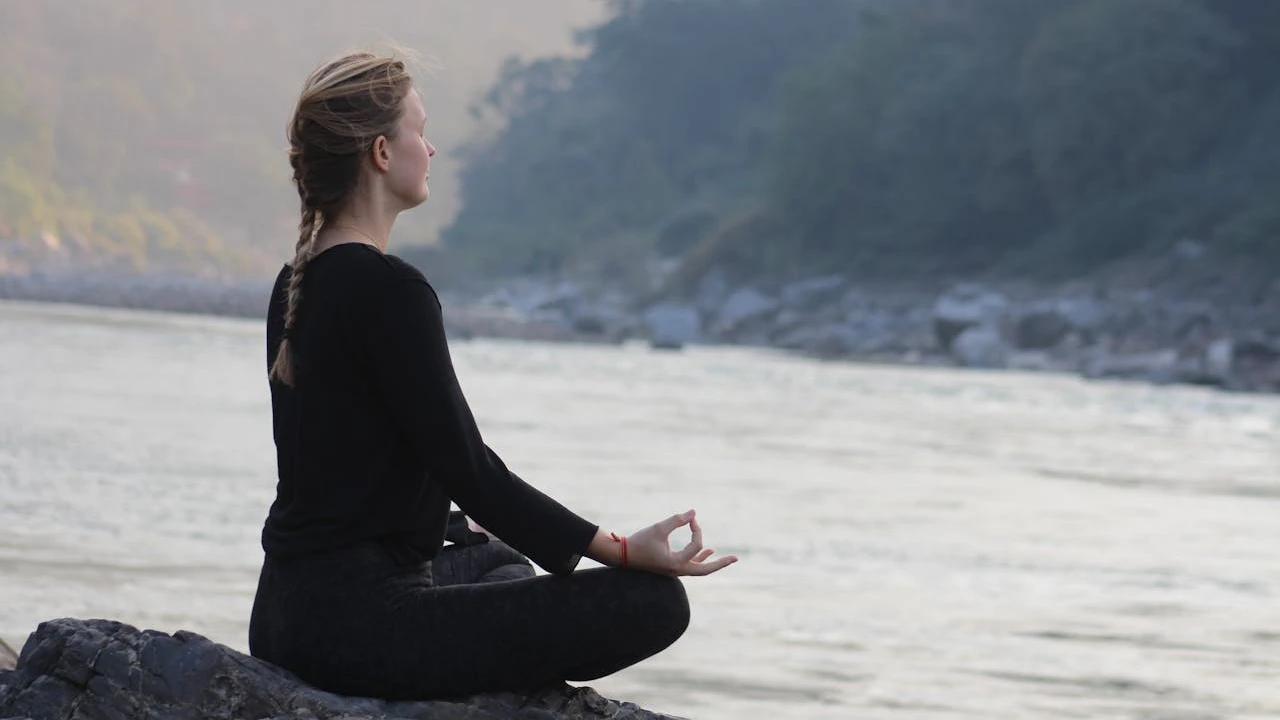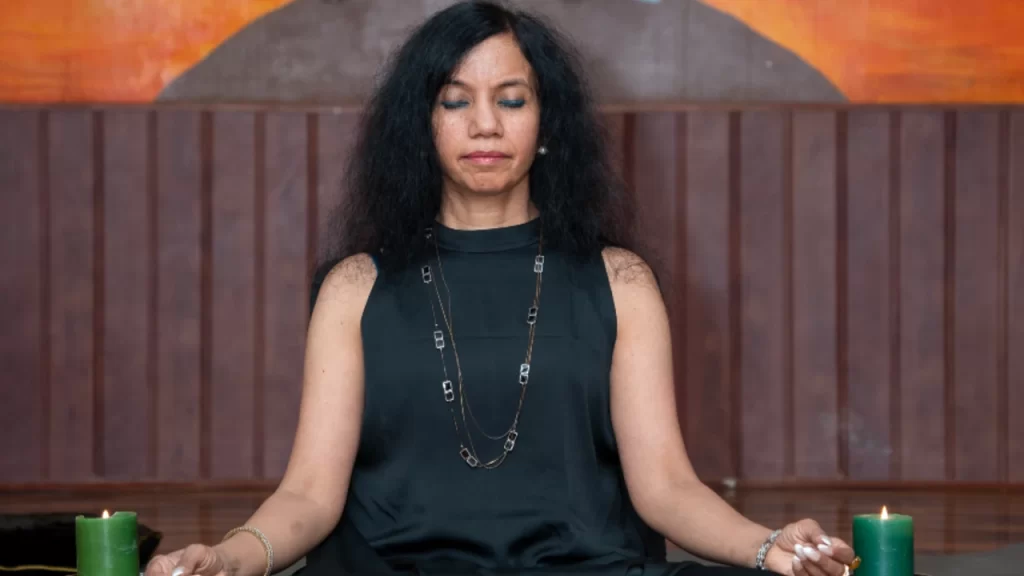Spiritual meditation in today’s fast-paced world has become a very popular way of gaining calm, inner peace, and self-awareness. How to meditate spiritually is not only to still the mind but also to create a deep soul-to-soul and universe-to-self connection. Everything you need to know for this journey in spiritual meditation will be covered here with methods and tips that can make this practice effective and rewarding.
Understanding Spiritual Meditation and Its Benefits
Spiritual meditation is above relaxation and stress relief. It is an inner discovery journey. Techniques related to how to meditate spiritually are meant for reaching personal growth, connecting one to higher energy, and enabling a deeper understanding of life itself. For beginners, this begins with embracing techniques that harmonize the body, mind, and soul. The NCBI reports that meditation practices increase well-being, decrease anxiety, and improve mental health; thus, it is a tool for emotional and spiritual development.
Preparation for Spiritual Meditation
Start by creating the right atmosphere to get into spiritual meditation. Calm surroundings allow you to move away from all these outer distractions and reach to your inner self. There are some preparation steps in that regard:
Set a Sacred Space: Create an area in your room, like the corner of the room, where you can use it to meditate. You may decorate the space using things that will make you feel calm, such as candles, crystals, or plants. Healing stone crystals enhance meditation by balancing energies and calming the self.
Set Your Intention: The first part of spiritual meditation is the intention. You want to concentrate on something in your practice of meditation: whether it is inner peace, emotional healing, or spiritual insight.
Step-by-Step Guide on How to Meditate Spiritually
If you are prepared to dive into spiritual meditation, here is a step-by-step guide to take you through the process for an enriching experience.
Step 1: Center Yourself with Breathing
Start by closing your eyes and taking deep breaths. Deep breathing calms the mind, centers your thoughts, and helps you enter a relaxed state. A 2017 study from the Journal of Psychosomatic Research confirms that deep breathing techniques significantly reduce anxiety and stress.
Step 2: Visualization Techniques
The most important part of spiritual meditation is visualization. You might see a peaceful place or envision divine light flowing through your body. It’s usually applied in alchemy energy healing, where the seeing of positive energy sets in alignment the mental and the physical states.
Step 3: Connect with your higher self
One of the main purposes of spiritual meditation is to connect with your higher self or universal energy. For this, you may imagine a guiding light or visualize your higher self that helps you tap into deeper insights. Quite a few work with life coach India professionals to enhance their meditation practices and make themselves more deeply intuitive.
Popular Techniques to Deepen Spiritual Meditation
Having learned the basics you will likely be interested in exploring some of the other techniques in common use to deepen the spiritual meditation experience.
Mantra Meditation
A mantra, or a sacred word or phrase, repeated helps to increase focus and spirituality. Mantras such as “Om” or “Peace” have been in use for years to connect with the self and the universe. Research has proven that mantra meditation reduces stress and increases mindfulness, thus it is a welcome addition to spiritual practice.
Mindfulness and Body Scanning
Body Scanning Scans every part of your body with your mind to induce relaxation and awareness. Often in life counseling, one can use this as a good way to be mindful by simply paying attention without judgment to the sensations within your body and thus being in the present.
Breath Awareness Meditation
The most simple yet potent meditation practice is breath awareness. You need to focus on your breath to keep the mind stable. It simply involves watching your breath entering and exiting the body, and the more you do this, the more your concentration gets centered and the more it calms your mind.
How Spiritual Meditation Supports Emotional Healing
How to meditate spiritually is closely related to connecting with the inner self while healing emotionally and mentally. This type of meditation practice helps release emotional baggage or trauma. It allows one to heal from emotional pain and cultivates self-compassion. Techniques used in spiritual meditation are often integrated into therapies like family constellations to help individuals heal from past traumas and restore emotional balance, creating space for deeper healing and self-discovery.
Overcoming Common Challenges in Spiritual Meditation
Certain challenges can arise while starting out with the spiritual journey. Ways to deal with certain difficulties include the following:
Restlessness: The first practitioners get distracted easily. The practices of visualization or adding healing stone therapy help the mind gain serenity.
Physical Discomfort: It may be painful for an hour to sit down continuously. Practice with shorter time limits and increase gradually.
Challenge Difficulty to Let Go Meditation often brings up buried feelings. Practice regularly helps you embrace and process those emotions over time.
Measuring the Benefits of Spiritual Meditation
Studies have shown that spiritual meditation has profound effects on overall well-being. Learning how to meditate spiritually regularly connects individuals more deeply with themselves and others, making them less stressed and better equipped to handle life’s challenges. In fact, meditation has been associated with improved moods and emotional regulation, with some studies showing almost a 60% reduction in anxiety.
According to research in the American Journal of Psychiatry, meditation activates the brain’s emotional control areas, making it an efficient tool for overcoming mental health challenges. Spiritual meditation is, therefore, not only for peace of mind but for fostering long-term emotional stability.
Integrating Spiritual Meditation into Daily Life
Consistency is the word when it comes to learning how to meditate spiritually. Here’s how you can do it in your daily routine:
Set a Regular Schedule: Meditation becomes easier with a fixed daily routine. Try practicing at the same time each day to establish a habit.
Journaling After Sessions: Writing down thoughts and experiences after sessions will be helpful to reflect on the journey and progress made after meditation. Journaling is highly recommended by mental health professionals and life coach India experts in maintaining awareness and facilitating personal growth.
Conclusion
Spiritual meditation is indeed a transformative process. Repeatedly practicing how to meditate spiritually will lead you to self-realization and peace within, building the groundwork for every walk of life. This could involve visualization techniques and even mantra recitations for your spiritual activities, eventually enhancing one’s pursuit for deeper self-consciousness and improvement. All these practices are accompanied by serenity, helping to heal emotions and mind, which can guide an individual toward leading a life richer and more meaningful.
FAQs
How to meditate correctly?
- Get settled. Find a quiet space where you can relax. …
- Breathe deeply. Defocus your eyes, gazing softly into the middle distance. …
- Check-in. Take a few moments to settle into your body. …
- Scan your body. Slowly turn your mind inwards. …
- Observe the breath. …
- Allow your mind to be free. …
- Prepare to finish. …
- Congratulate yourself.
How to meditate to see God?
Spend time in meditation gazing intently and with deep devotion at the point between the eyebrows, and you will see and feel His response there. If you don’t see light in meditation, then visualize God’s light bathing you, purifying you, and freeing you.







Leave a Reply